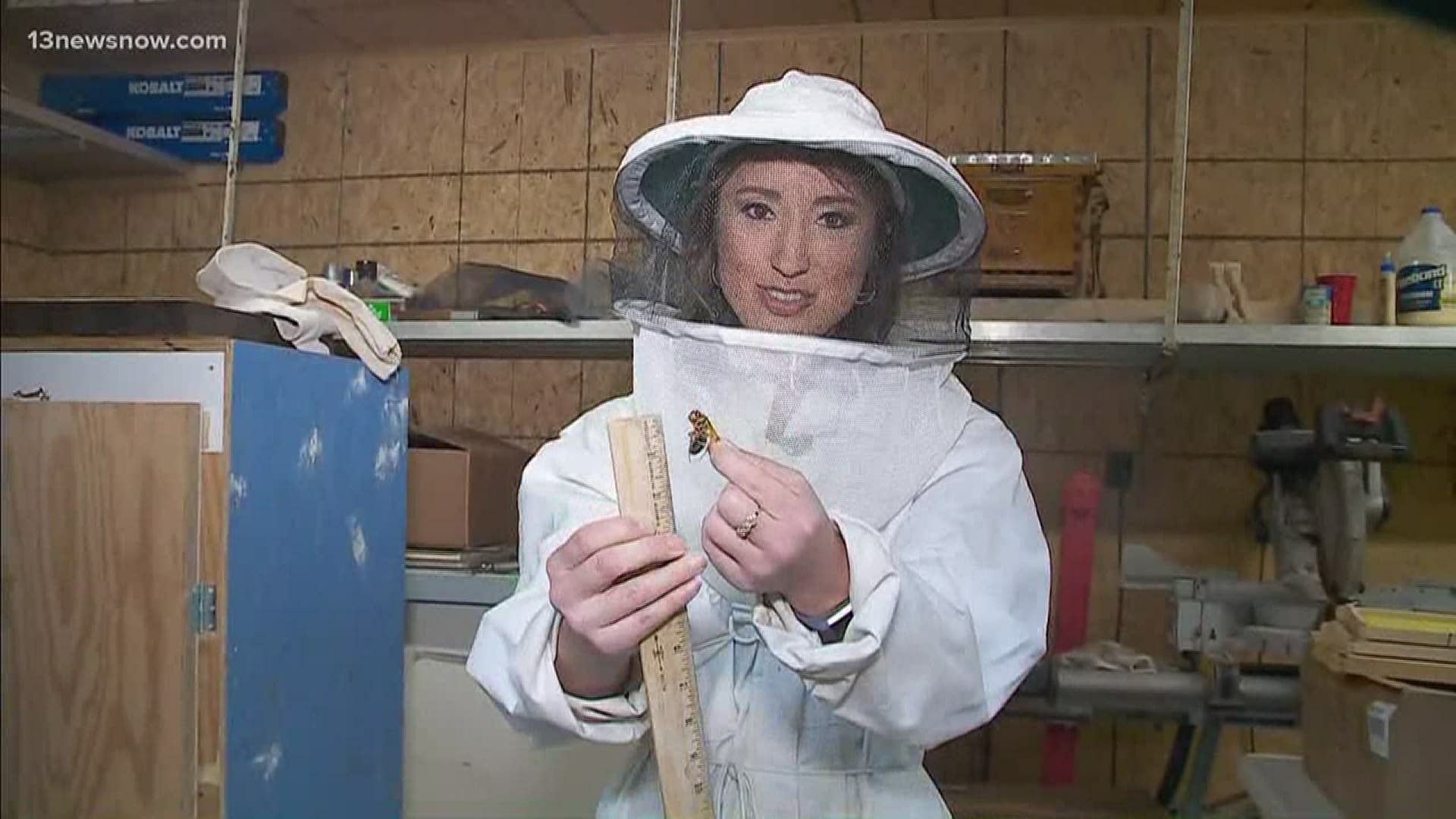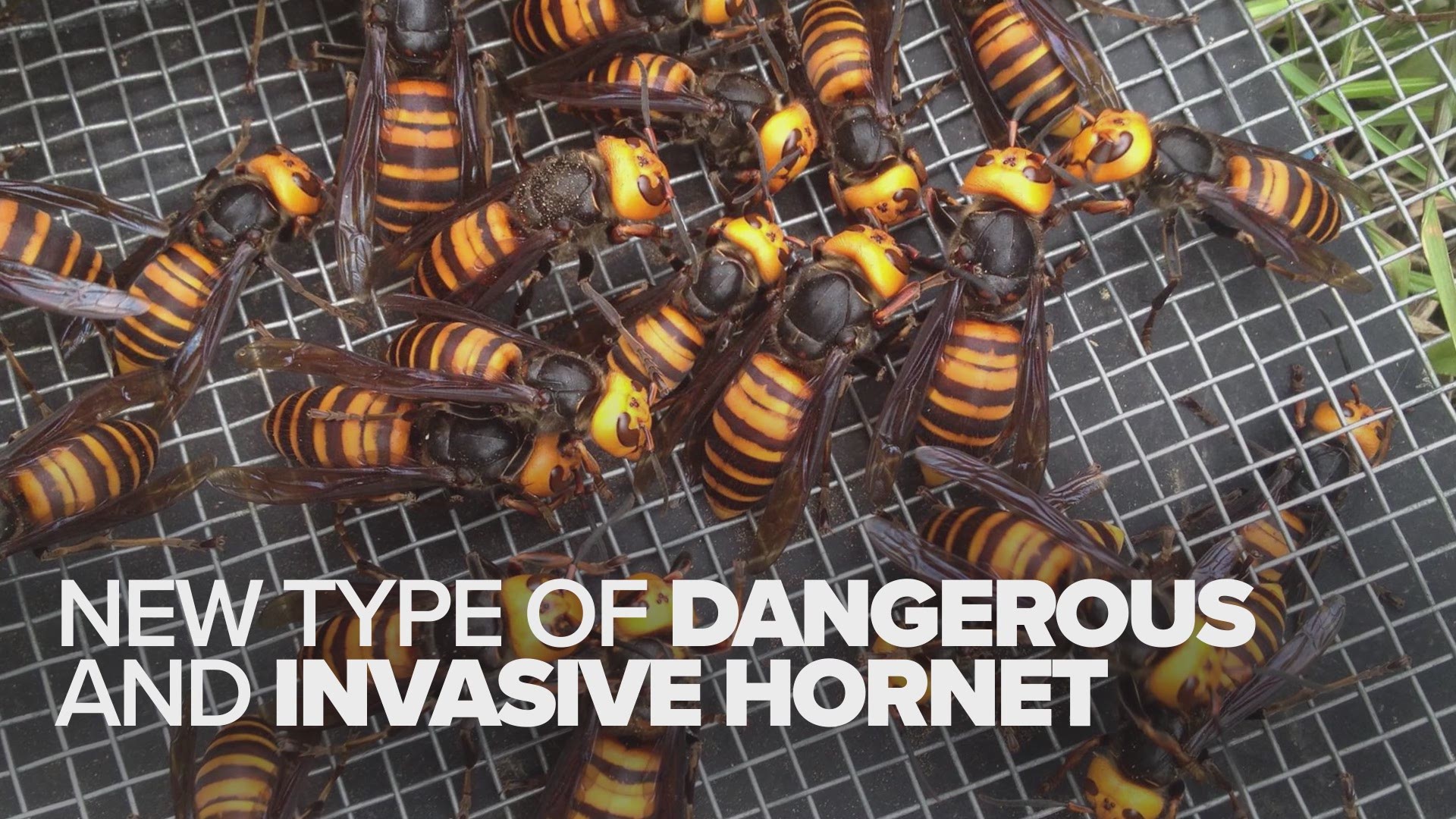CHESAPEAKE, Va. — The Asian Giant Hornet is not in Virginia yet, which is great news - because unlike Asian bees, American honeybees haven’t yet developed a defense against the thumb-sized predators.
It makes beekeepers concerned about the possibility of the "murder hornet" spreading to Virginia, because they're capable of destroying an entire bee colony in just twenty minutes.
Hodgie Holgersen is the President and Swarm Coordinator of the Tidewater Beekeepers Association. He said he's known about the Asian Giant Hornet’s habit of destroying bee colonies in Asia, for years.
“And it's like 'OK, better you than me, it's not my problem,'" Holgerson said. "But now it might be my problem.”
Holgerson said he's been concerned since the species landed in the Pacific Northwest.
"It's not like you can sit out here and guard your bees with a shotgun against an insect. It doesn't work that way," he said.
Holgerson said it should concern you too, because honeybees are pollinators for our agriculture.
"We have to deal with it, and deal with it aggressively," Holgerson said. "If you don't, the cost of your food is going to go up.”
Virginia Tech entomologist Peter Schultz said the "murder hornet" looks like some of our native hornets, but it's twice the size and has a wicked stinger.
"A bigger insect is going to have more venom in its stinger, and as such, is going to be a greater danger of anaphylaxis or shock,” he said.
Rest assured, Asian Giant Hornets don't normally target humans, Schultz said. Death from their sting only happens as a secondary allergic reaction.
It's unclear how the species got to America from Asia, but Schultz says they most likely transported on a cargo ship.
"Very close to a major port is always concerning,” Schutlz said.
It's a concern Holgerson hopes his bees never die from, but he's keeping tabs on the situation, just in case.
If you think you see one, the best thing to do is take a picture of it from a distance, especially if you can photograph it next to a ruler for measurement.
Then, send the picture to your local Virginia Cooperative Extension. That will get the picture into the right hands to identify the species of hornet.


